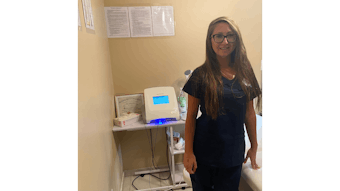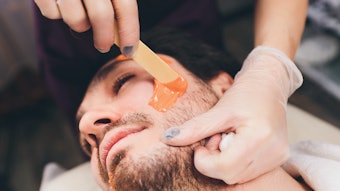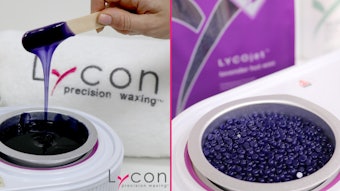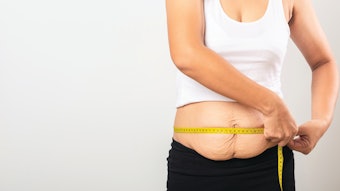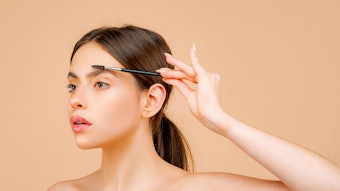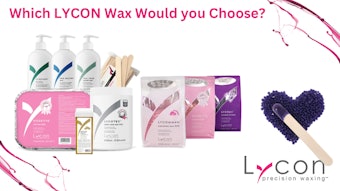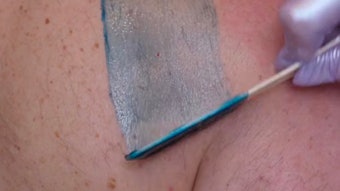
Waxing and sugaring are highly effective hair removal methods widely used in esthetic practice. However, improper technique or poor aftercare can lead to complications: ingrown hairs, inflammation and post-inflammatory hyperpigmentation (PIH), especially in sensitive areas such as the bikini zone. This article explores the mechanisms of these common reactions and presents clinically supported prevention and correction protocols, including modern approaches to intimate area brightening.
Depilation: Physiology and Skin Impact
Mechanical depilation with wax or sugar removes hair from the root but can cause microtrauma to the skin.
- Waxing often removes not only the hair but also the stratum corneum, which can lead to dryness, irritation and microinflammation.
- Sugaring is gentler, as the paste primarily adheres to the hair and not the skin. It's well-suited for sensitive areas such as the face and bikini line.
Both methods activate the skin's immune response, triggering vasodilation, redness and sensitivity.
Ingrown Hairs: Causes and Prevention
Ingrown hairs are one of the most common complaints following hair removal, especially in clients with thick, coarse or curly hair.
Mechanisms:
- Follicle damage from improper removal
- Keratin buildup blocking the follicular opening
- Hair growing back into the skin at an angle
Prevention:
- Use of AHA/BHA exfoliating gels 2–3 times per week
- Gentle exfoliation starting 3–5 days after treatment
- Proper skin hydration
- Correct removal technique: with hair growth for sugaring, taut skin and clean motion for waxing
Case Study:
A client with thick skin and Fitzpatrick type V presented with inflamed papules after bikini waxing. Treatment included 2% salicylic acid, avoiding tight clothing and a course of lactic acid lotion. Full recovery within 10 days.
Inflammation, Folliculitis and Prevention
Folliculitis occurs when bacteria enter the micro-injured follicle area. The most common culprit is Staphylococcus aureus.
Risk Factors:
- Poor hygiene practices
- Excessive sweating
- Repeating wax passes on the same area
Prevention Protocol:
- Pre- and post-treatment antiseptic (e.g., chlorhexidine)
- Use of disposable tools and gloves
- Avoidance of heat and friction for 24–48 hours
- Spot treatment with antibacterial serums (e.g., 4–5% niacinamide, tea tree oil, azelaic acid)
Post-Inflammatory Hyperpigmentation and Brightening
PIH is caused by melanocyte activation due to inflammation. It is particularly common in Fitzpatrick skin types IV–VI, especially in the underarms and bikini area.
Common Causes:
- Chronic skin trauma (improper depilation, friction)
- Sun exposure or lack of SPF
- Use of harsh skin care products
Brightening Methods:
- Peels: lactic (20–30%), glycolic (10%), kojic (5%) – 4–6 sessions every 10–14 days
- Topicals: niacinamide (5%), arbutin, vitamin C, azelaic acid – used for at least 4 weeks
- Professional Devices: fractional lasers, IPL – with no active inflammation
Important: Always follow with SPF 30+ daily, even without direct sun exposure.
Professional Protocols for Estheticians
Preparation: Clean with antiseptic, apply talc, assess hair length
Treatment: Use disposable tools, wear gloves, maintain proper removal technique and skin tension
Soothing Phase: Apply panthenol-based lotion, aloe vera gel, cool compresses
Home Care: Advise client to avoid sauna, gym or friction; moisturize daily; delay exfoliation until day 3–5
Add-On: Brightening treatments should be performed at least 10–14 days before or after waxing/sugaring
Skin Diagnostics and Individualized Care
A modern esthetician must assess each client individually based on skin type, hair density and potential sensitivities.
Recommended Steps:
- Determine Fitzpatrick skin type.
- Perform sensitivity patch test.
- Evaluate for risk of PIH or inflammation.
- Discuss realistic outcomes and contraindications.
2025 Trend: Clients increasingly value biocompatibility and microbiome-conscious treatments, requiring estheticians to adopt personalized, skin-friendly approaches.
Case Study: Restoring Skin After Irritation
A 28-year-old client, Fitzpatrick III, reported redness, dryness and stinging underarms after home waxing. She had used an alcohol-based deodorant post-treatment and wore tight synthetic clothing.
Conclusion: Post-depilation dermatitis with impaired barrier function.
Recovery Protocol (7 Days):
- Days 1–2: Discontinue harsh products, cleanse with pH-neutral gel, apply cream with panthenol and niacinamide, use thermal water compresses
- Days 3–5: Introduce hyaluronic acid moisturizer, apply SPF 30+
- Days 6–7: Return to normal skincare upon full recovery
Prevention: Avoid alcohol-based products for 48 hours, apply soothing agents immediately post-treatment, wear breathable fabrics.
Conclusion
Depilation is not just about hair removal—it’s a dermatological procedure that requires technical expertise and clinical awareness.
Proper skin assessment, adherence to protocols and effective home care all contribute to safe, satisfying results.
Modern strategies for preventing ingrown hairs, inflammation and pigmentation make waxing and sugaring safe and effective for even the most sensitive areas.
